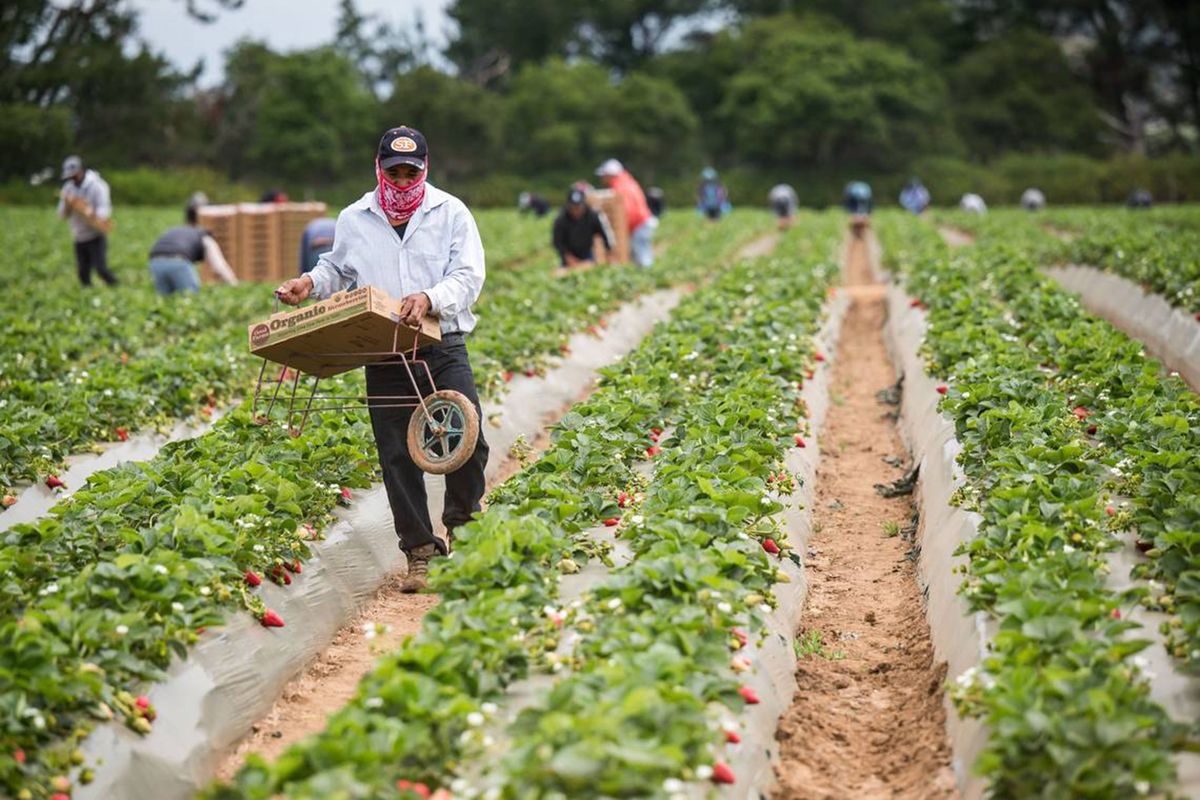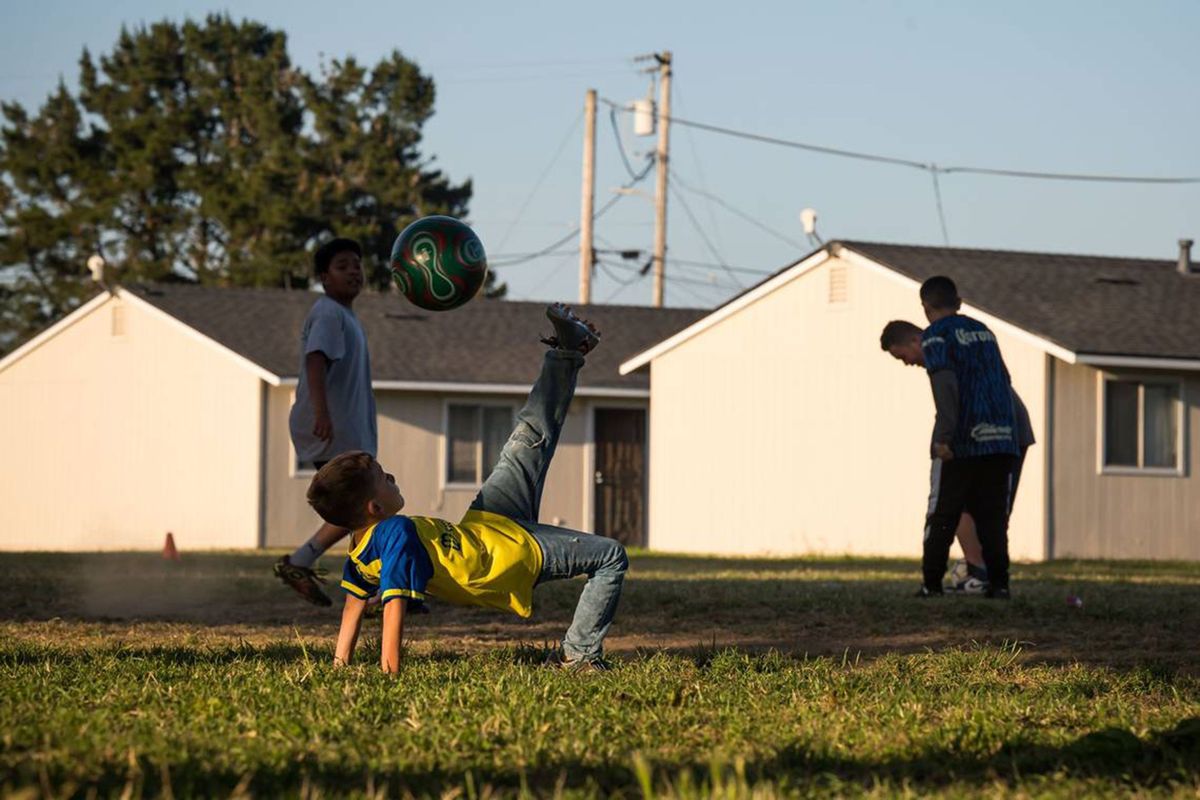California closes thousands of farmworkers’ housing each year. A lawmaker wants them opened
Farmworkers pick strawberries in May 2023 on the Ramos Farm on Ranport Road outside of Watsonville, California, a few miles from the Buena Vista Migrant Center. The center is one of California’s 24 farmworker housing centers, which provide state-subsidized housing for seasonal workers. (Xavier Mascareñas/The Sacramento Bee/TNS)
SACRAMENTO, Calif. – Thousands of California migrant farmworkers must leave their affordable housing every year when the state closes the complexes seasonally – now a Central Valley lawmaker and a legislative leader want to change that.
Assemblyman Joaquin Arambula, D-Fresno, on Thursday announced plans to introduce a bill that would instruct the California Department of Housing and Community Development to keep its 24 migrant farmworker housing complexes open year-round. Assembly Speaker Robert Rivas, D-Hollister, is a co-author of the measure.
Arambula authored Assembly Bill 2240 after a Sacramento Bee investigation found many farmworkers would stay in their units if they remained open.
They migrate only because they cannot find places to live once they lose their affordable housing, and their children’s education suffers from the constant moves.
Bee reporters visited seven migrant centers and surveyed 150 farmworkers. Eighty percent of those surveyed said they would continue to live at their center if it remained open year-round. About 69% of farmworkers with children said migration negatively impacted their kids’ education.
Most migrants who spoke to Bee reporters traveled to Mexico after the centers closed, although some went to states with cheaper housing, including Arizona, Texas and Oklahoma.
California operates the centers – which contain 1,885 housing units – from April or May through October or November, during the height of the agricultural work season. The complexes then close and remain vacant for months.
More than 7,000 farmworkers and family members live at the migrant centers, and about 27% are school-age children. The housing contains the only units the state subsidizes directly. Most residents pay less than $400 per month for their units.
Previous migrant center reforms
Farmworkers who live at the centers must income-qualify and are required to move 50 miles away for at least three months after the housing centers close for the season to prove their status as migrants.
Advocates previously fought for an exemption to this rule for families with school-age children as part of an effort to ensure migrant children were able to stay in one place for classes.
A 2018 bill from Sen. Anna Caballero, D-Merced, enacted this exemption, which ended in January. But Bee reporters found in 2023 that few families were using the exemption.
Many had not heard about the exemption or were unable to stay in their communities because they could not find affordable places to live after the migrant centers closed.
Lauren Ornelas of the Food Empowerment Project said her organization is now focused on keeping the centers open to provide farmworkers with safe housing and to allow their children to complete their education.
She said the most important factor for farmworker housing affordability is “for them to have a living wage.”
“Until that happens, we want to make sure that any type of housing situation that is provided to farmworkers does not impact the education of their children,” Ornelas said.
Opening migrant centers permanently
Arambula’s bill would remove the 50-mile requirement and keep the centers open permanently.
The assemblyman said he thinks it’s “nonsensical” to close the centers every year, especially as agricultural labor demographics have changed. He represents farmworkers living at the Parlier Migrant Center in Fresno County and said he wants to find solutions to help families living there and at other complexes.
“Many of our farmworkers now have families and are with children,” he said. “So closing the centers is hugely disruptive and inhumane to the entire family.”
HCD officials did not take a position on keeping the centers open year-round in 2023 interviews with Bee reporters. But they have expressed concerns that opening the centers to all farmworkers would prompt competition for housing between migrants and those living in California year-round.
Arambula called that viewpoint a “holdover from a world that no longer exists.”
The majority of California’s agricultural laborers no longer migrate around the state or to other places, instead preferring to remain settled in their communities. Just 8% of the state’s farmworkers were migrants in fiscal years 2019 and 2020, according to U.S. Department of Labor data.
The migrant centers operated on a budget of about $16.95 million during the 2023-2024 fiscal year. Keeping them open year-round would require additional state funding. Arambula did not yet have a cost estimate, saying the bill is still in the early stages of the legislative process.
HCD officials declined to tell Bee reporters in 2023 how much it would cost to renovate the centers into year-round housing, saying the agency had not calculated an estimate.
The state is facing an estimated $38 billion budget gap, meaning any bills requiring additional money will likely face a tough battle. Rivas’ involvement adds some clout to the measure.
“We must keep these homes accessible year-round so that farmworkers have safe and affordable places to live,” Rivas said. “This legislation also allows families to keep connected to their communities, and it ensures children get to stay at their neighborhood schools.”

